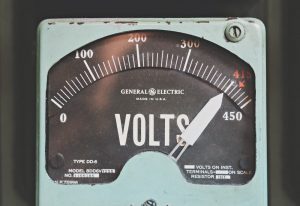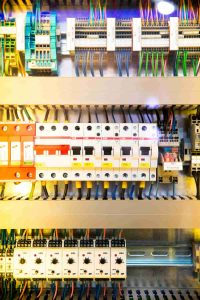We can answer the question of what is compensation, first of all, to maximize or carry the produced energy power and to get the highest level of efficiency from this released electrical energy.
In other words, it is the process of increasing the quality of the existing energy load and delivering energy to the consumer in the most economical ways.
The known fact is that; Although undesirable, energy losses may occur in some parts of the electrical energy when electricity is produced, and it is of course possible to minimize these losses and reduce the resulting damage.
Thanks to the compensation process, these energy losses can be minimized. The reactive energy taken from the devices is delivered to the consumers from the easiest points, so that the grid systems are not exposed to unnecessary use, and thus more efficient and quality energy can be used.
Post Content
a- What are the benefits of compensation to the system?
Thanks to the compensation process, the energy losses experienced during power generation in the grids will decrease and thus more energy will be achieved.
The yield level will also increase proportionally. In fact, passing more and quality current means that the current there is successful. With the increase in the carrying capacity, the production in the system will increase.
Meanwhile, excessive heat loss will be prevented by the use of compensation. Since the excess energy is available, the cost of energy sales will decrease and a very economical level will be reached for the country.
Since the energy consumed will decrease, a decrease in direct wages will be the expected and desired result. The biggest contribution is to prevent energy losses. Thus, the quality of the facilities will increase rapidly.

b- What are the Reasons for Compensation?
There is no doubt that energy loss is experienced in every network that is not compensated, and this situation causes great damage.
Since cables and lines tend to draw more current, energy losses are likely between them. And as such energy quality losses are constantly experienced, the energy carrying capacity also slows down and decreases.
You do not want your facilities and businesses to operate under their capacity. For this, do not allow transformers and cables to overheat as well as voltage drop.
c- What are the Compensation Types?
1-Individual Compensation:
Receivers can be compensated individually with reactive power sources, which can be motors, lamps or transformers. Receiver and capacitor are included in the circuit and their outputs are together, and as a result of this, a separate capacitor system is not needed and this is called an individual capacitor.
In addition, during this system, fluorescent luminaires with ballasts are also preferred when using a large powerful motor.
2-Group Compensation:
As the second type of compensation, we can talk about the group ones. Here, input and output are provided via the same contactor, not one by one.
3-Central Compensation:
This type of compensation, which is frequently preferred in enterprises and facilities, is these central ones. It is a type that is generally used because the loads to be used do not always need to be switched on and off at the same time.
According to the type of loads in the circuit, this system adjusts and presents the compensation power. Instead of providing individual power or creating this system with a group, providing compensation control through a single centre has always succeeded in being a suitable and economical method for systems.
d- What are the Types of Compensation Systems?
1-Classical (With Contactor) Compensation:
Contactors and capacitors are used during the installation of the classical (with contactor) compensation system. In addition to these, it is preferred to use reactive power control relay and fuse.

Reactive power control relay receives and organizes some information from the current transformer. By calculating the Cos φ value, opening or closing of the contactors is provided easily and quickly. Thanks to this system created, capacitors are activated and removed.
2- Dynamic (Thyristor Fired) Compensation:
This system has two different types as thyristor and triac. Triacs are generally used for single-phase energy loads not exceeding 25A. In addition, thyristors are preferred to be used in facilities and companies with excessively high loads.
e- Why is compensation important?
The importance of compensation began to be better understood day by day and as energy production increased. All countries are trying to make many good initiatives about energy use and saving, and economical methods are always being sought.
If the aboveground and underground energy resources are extracted and used at a high quality level, it will be efficient for the future of the countries. Countries that act with this idea can both increase energy efficiency and provide energy for themselves.
f- Compensation and Harmonics
Waves other than fundamental waves are called harmonic. Harmonic current also means the distortion of the formed energy wave. Elements and elements in electrical systems are produced for currents and voltages, usually with a frequency of 50Hz.
The devices of some circuits may cause distortion of the circuit current and waveform. In this case, it also causes harmonic pollution. These harmonics greatly reduce the energy quality. Even if there is an overload, punctures can be seen in a facility. In addition to these, it can create intense current in the networks and increase the voltage level undesirably.
There are some devices that cause harmonic formation and you can list them as follows; arc furnaces, fluorescent lamps, welding machines, electronic speed control devices, Thyristor controlled rectifiers. In addition, if capacitors create a linear load, they do not produce appropriate harmonics on their own.
In this case, it affects the existing harmonic level in the networks and causes the formation of networks that are loaded with overcurrent. Before any compensation system is created, this harmonic effect should be considered and then designed with professionals.
g- Compensation Panel
One of the important factors for facilities is power. It is also necessary to regulate their power coefficients. The panel with the necessary devices and measuring tools is called the Compensation Panel.
Even though electrical systems are operated in the most suitable conditions, reactive power must be close to the required area, thus providing the highest level of efficiency. In addition, reactive power compensation is the name given to compare and classify reactive power needs with some techniques.
Capacitors are used for electrical systems and can generate reactive power. In addition, these electrical systems are also capable of generating reactive power for inductive receivers.
What are the Compensation Panel Features?
These compensation panels can be mounted in two different ways, externally and internally. Only external panels should have ventilation holes.
This opening can be left thanks to the appearance of a roof, leaving the upper part inclined. Contrary to this situation, it will be sufficient to have aspirators that can provide ventilation in the internal panels.
As a result, in this article, we basically answered this question, what is compensation, and we listed a few of its features together with its types. Thanks to the use of compensation, the energy produced is economical and distribution routes are calculated and determined within the smallest receivers.
There is an inescapable need for electrical energy in our world and this need is increasing day by day. Energy production should be more for the future of countries, but production should not become expensive. Unnecessary losses occur between cables, but it is in our hands to minimize this.
With these eliminated losses, buyers and consumers will be fed with easier and higher quality energy. And as a result, the use of unnecessary switches and expensive cables will also decrease.
* You can find all of these properties in Tense Reactive Power Relays. You can visit our compensation page for more information.
